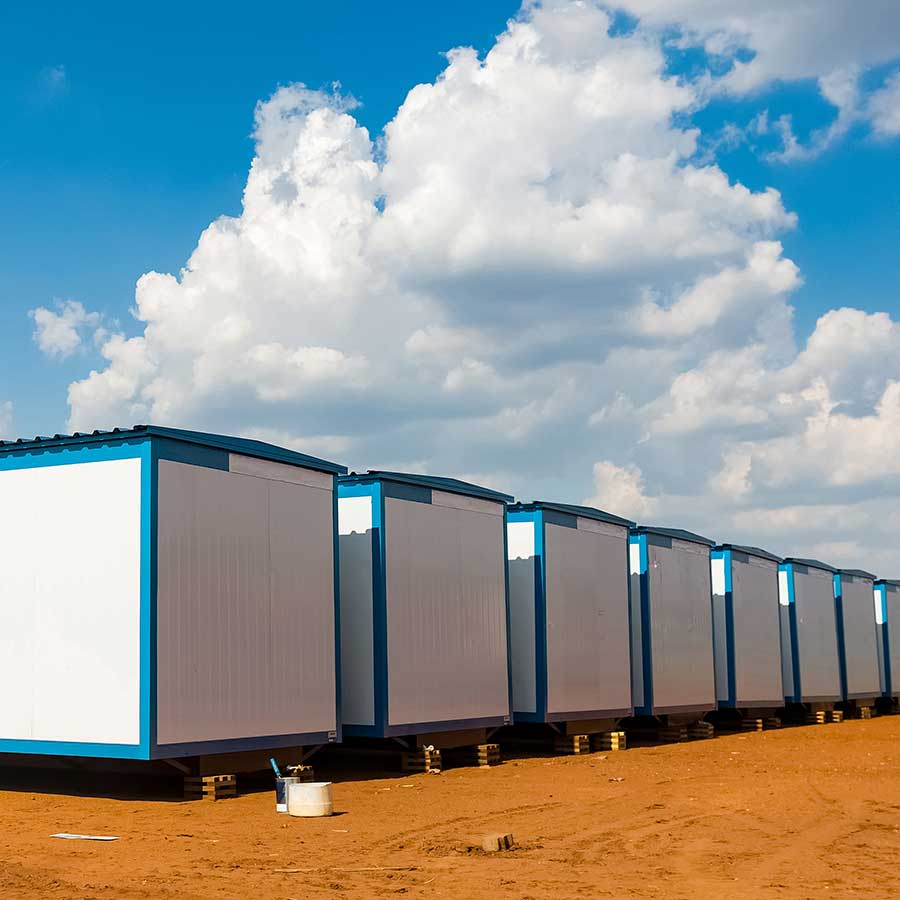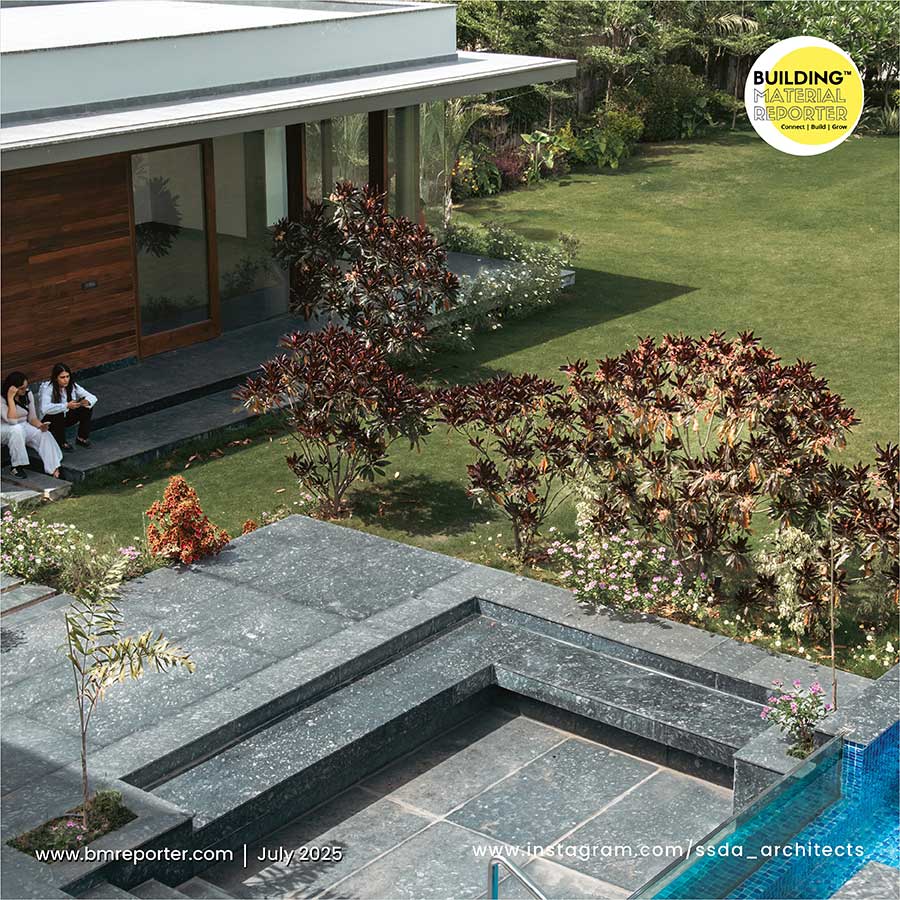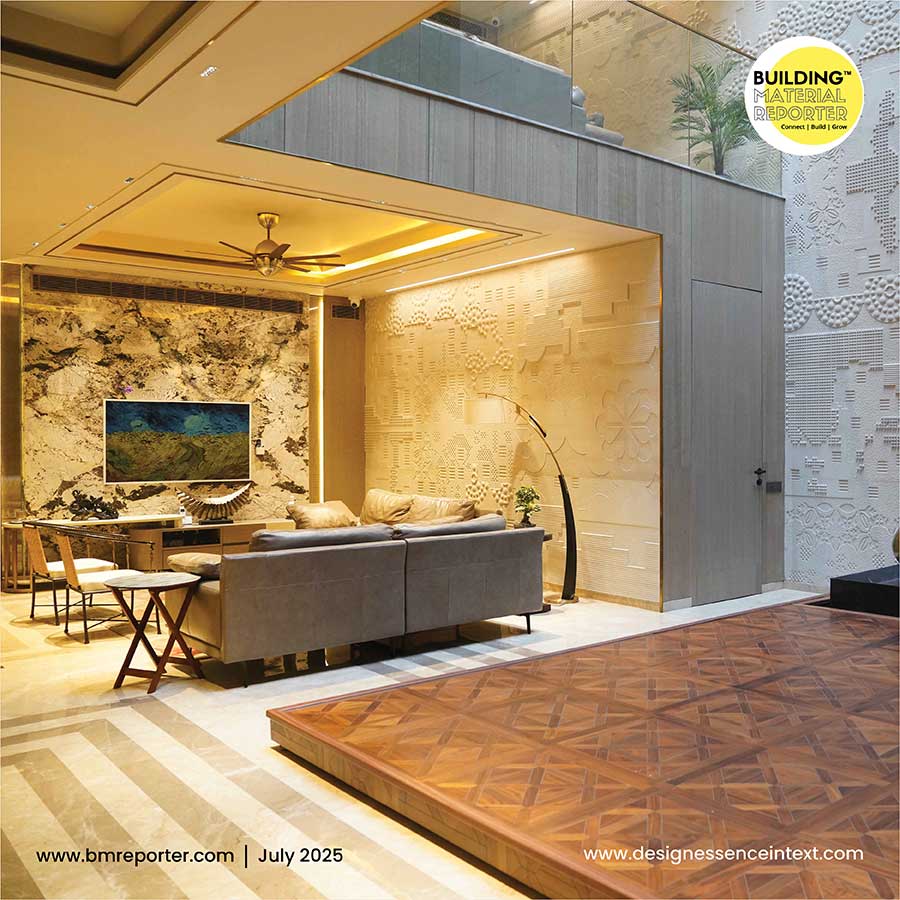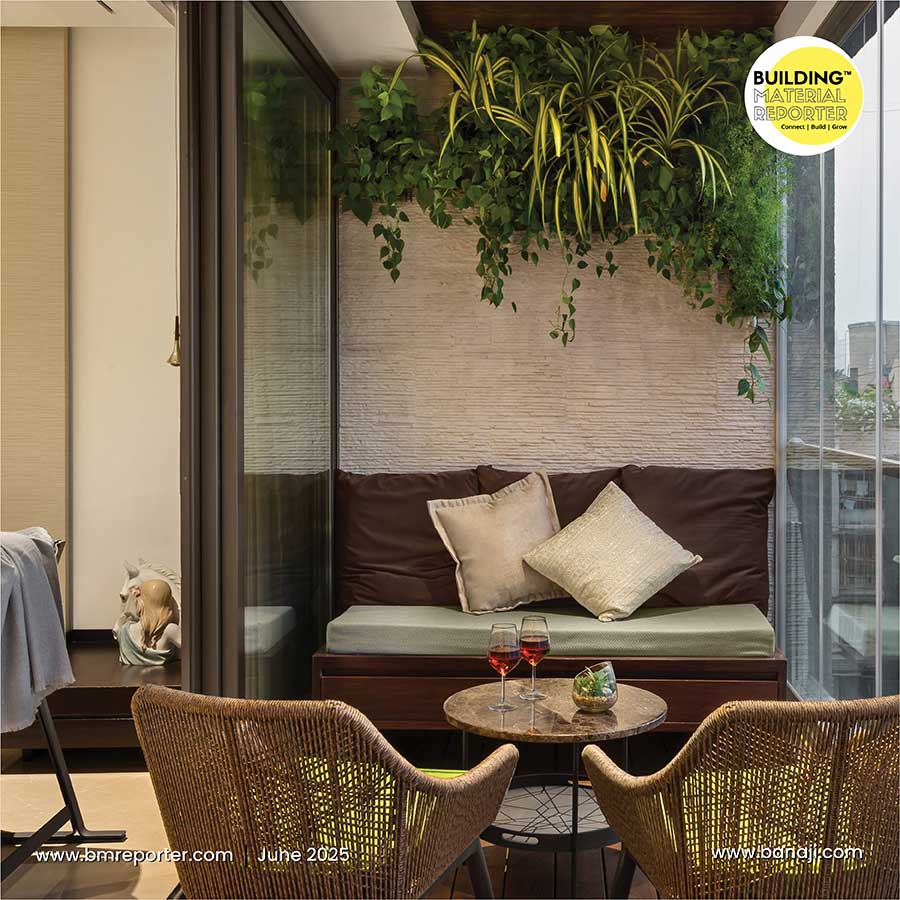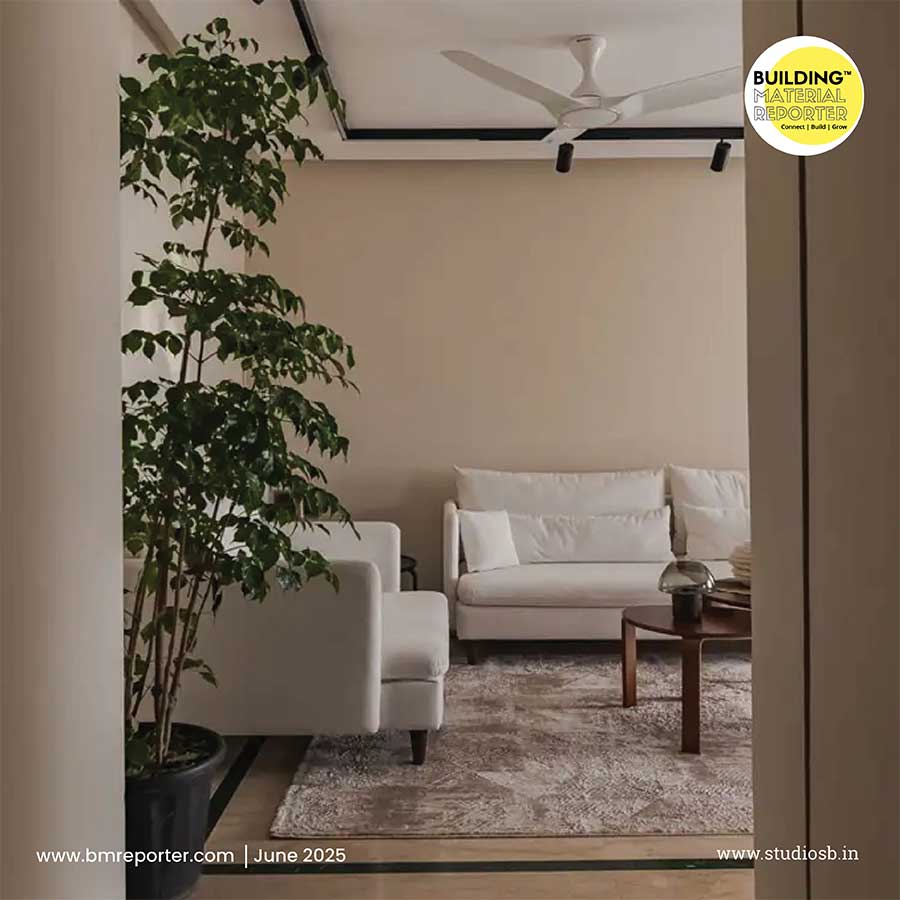Best Indoor Plants for Compact Homes: Real Estate Tips
- December 12, 2024
- By: Ar. Priyanshi Shah
- INFLUENCERS
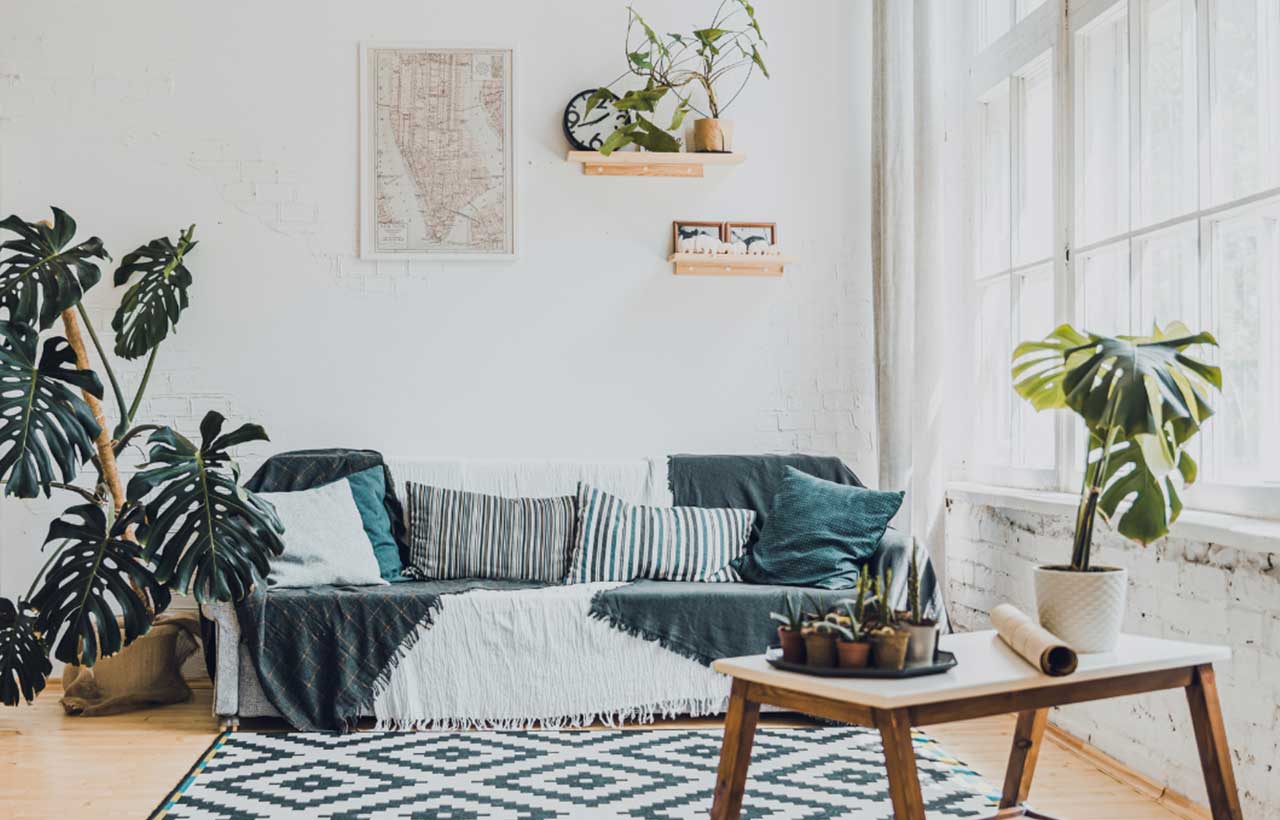 As we struggle to survive, life passes in the moment where each of us thrives to live consciously in the interplay of space and nature. So naturally, we wonder about the notion of home in the hustle and bustle of our city life. Living in our compact house and in those confined walls we foster harmony and connection. Nature brings inspiration, peace and vibrancy to these compact homes with a conscious considerate decision to add an indoor plant to a dead corner making the space alive and full of life, remembering the symbiotic relationship with the earth. This Building material reporter guide explores the philosophy behind the idea of indoor plants for compact homes, considering the types of plants, their adaptability, maintenance and visual vibrancy.
As we struggle to survive, life passes in the moment where each of us thrives to live consciously in the interplay of space and nature. So naturally, we wonder about the notion of home in the hustle and bustle of our city life. Living in our compact house and in those confined walls we foster harmony and connection. Nature brings inspiration, peace and vibrancy to these compact homes with a conscious considerate decision to add an indoor plant to a dead corner making the space alive and full of life, remembering the symbiotic relationship with the earth. This Building material reporter guide explores the philosophy behind the idea of indoor plants for compact homes, considering the types of plants, their adaptability, maintenance and visual vibrancy.
Benefits of Indoor Plants for Small Spaces
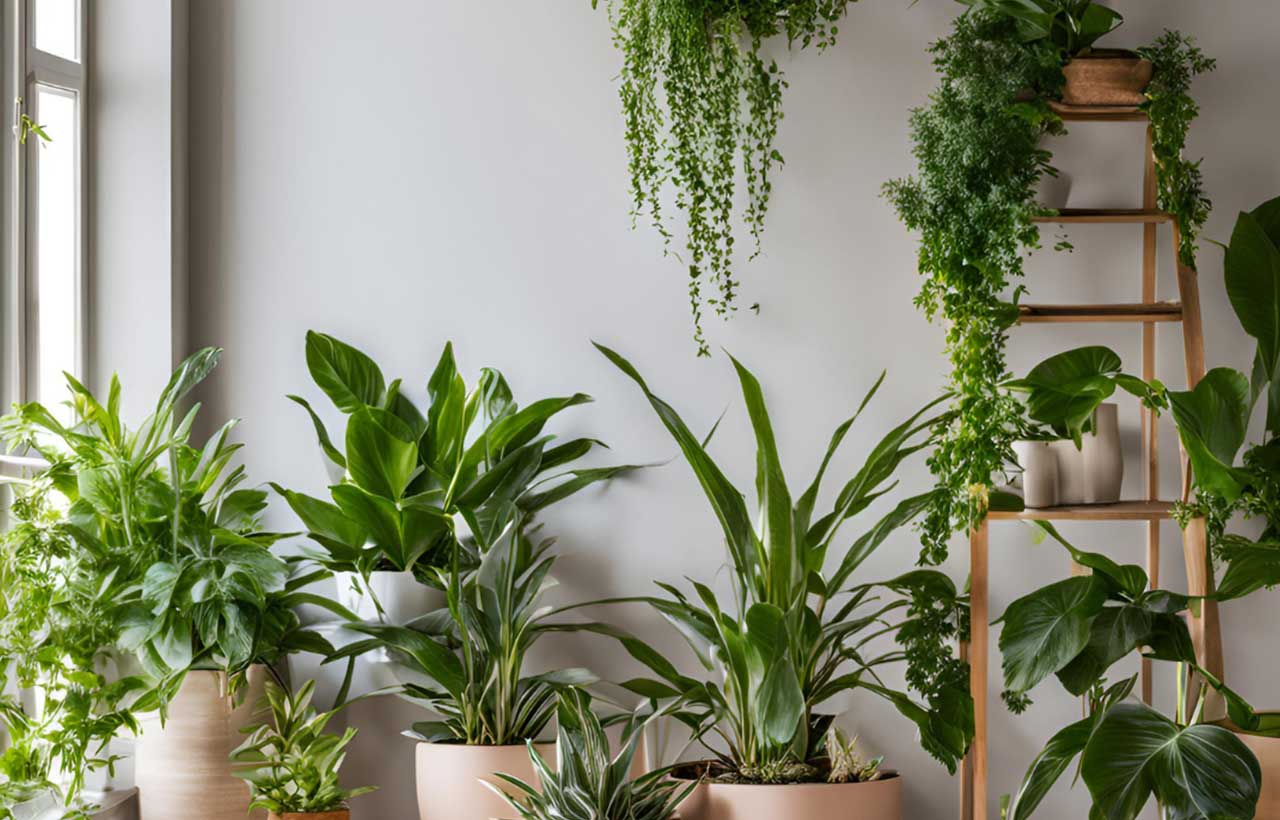 The addition of indoor plants to the small spaces is more than visual and aesthetic qualities. It sustains health and reduces stress levels creating a cohesive and harmonious living environment. Let's explore:
The addition of indoor plants to the small spaces is more than visual and aesthetic qualities. It sustains health and reduces stress levels creating a cohesive and harmonious living environment. Let's explore:
Enhancing Air Quality: It removes toxins and acts as an air purifier producing oxygen. With the thoughtful arrangement of plants, the compact space feels wide and elegant.
Boosting Mental Well-being: Several studies suggest that the presence of plants in the home improves one’s physical and mental well-being. The green corner, the smell and creative use of it reduce stress and help one to focus on particular tasks.
Adding Aesthetic Appeal: Comprehending design styles and decor, minimalist to AI-biophilic styles, indoor plants complement diverse design themes and concepts.
Top Indoor Plants for Compact Homes
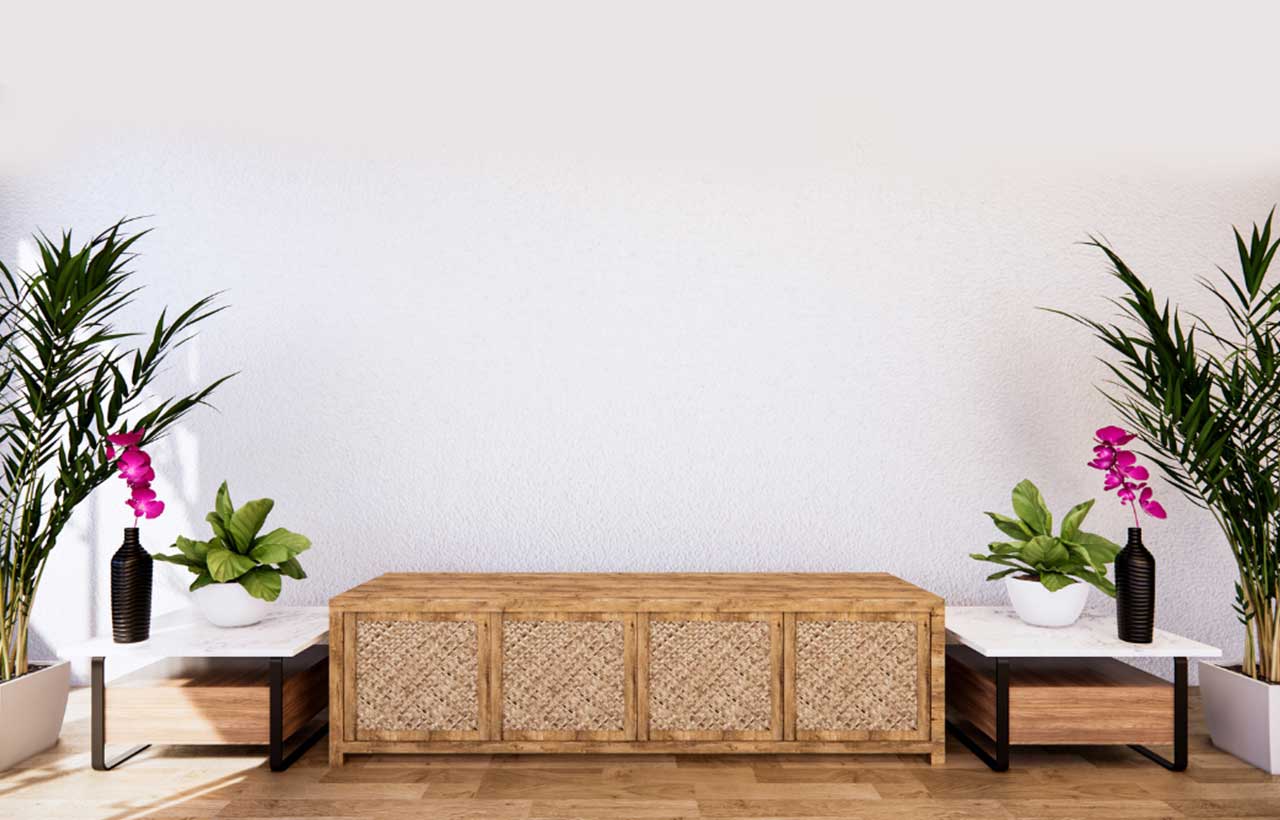 In the 21st century with mass production and population, the housing crisis resulted in the evolution of compact living. Creative designers, industry experts and users integrated indoor plants as a functional element in the home and not just for aesthetics.
In the 21st century with mass production and population, the housing crisis resulted in the evolution of compact living. Creative designers, industry experts and users integrated indoor plants as a functional element in the home and not just for aesthetics.
Snake Plant: The Perfect Low-Maintenance Plant: When you are looking for a cheap plant, take a peek at the snake plant known as “mother-in-law’s tongue” - a sturdy and fashionable option for tight homes. It requires low to bright indoor light and minimal watering twice a week. It has sword-like leaves, and a perfect vitality to add in a quiet corner, study table or narrow areas.
Spider Plant: Ideal for Hanging Baskets: Spider plants are well known for their arching leaves and abay plantlets. It is adaptable to diverse spaces as it needs medium indoor light and makes sure that the soil is moist otherwise the plant might die. Found in a variety of colours it is mainly used for hanging baskets and table tops.
Aloe Vera: A Healing Plant for Small Spaces: It is a symbol of health and stability. Due to its medical properties and minimal care, it is perfect for outdoor spaces in the compact home. It requires bright indirect light and ceramic planters emphasise its natural beauty.
ZZ Plant: The Resilient Beauty: When one is designing the space, the touch of dark green leaves brings elegance and beauty, the ZZ plant is a commonly used indoor low-maintenance plant. It can tolerate low light but it thrives in indirect light and stores water in its rhizomes. The aesthetic of the ZZ plant like a sculptural form merges with the modern decor and various design themes.
Pothos: The Versatile Climber: Due to its climbing features, cascading vines and elegant beauty, it is one of the most famous plants among the designers. It needs medium indirect light and it is used especially for hanging. It is also called hanging planters as it adds dynamic lush to the bespoke interiors.
Choosing the Right Indoor Plants
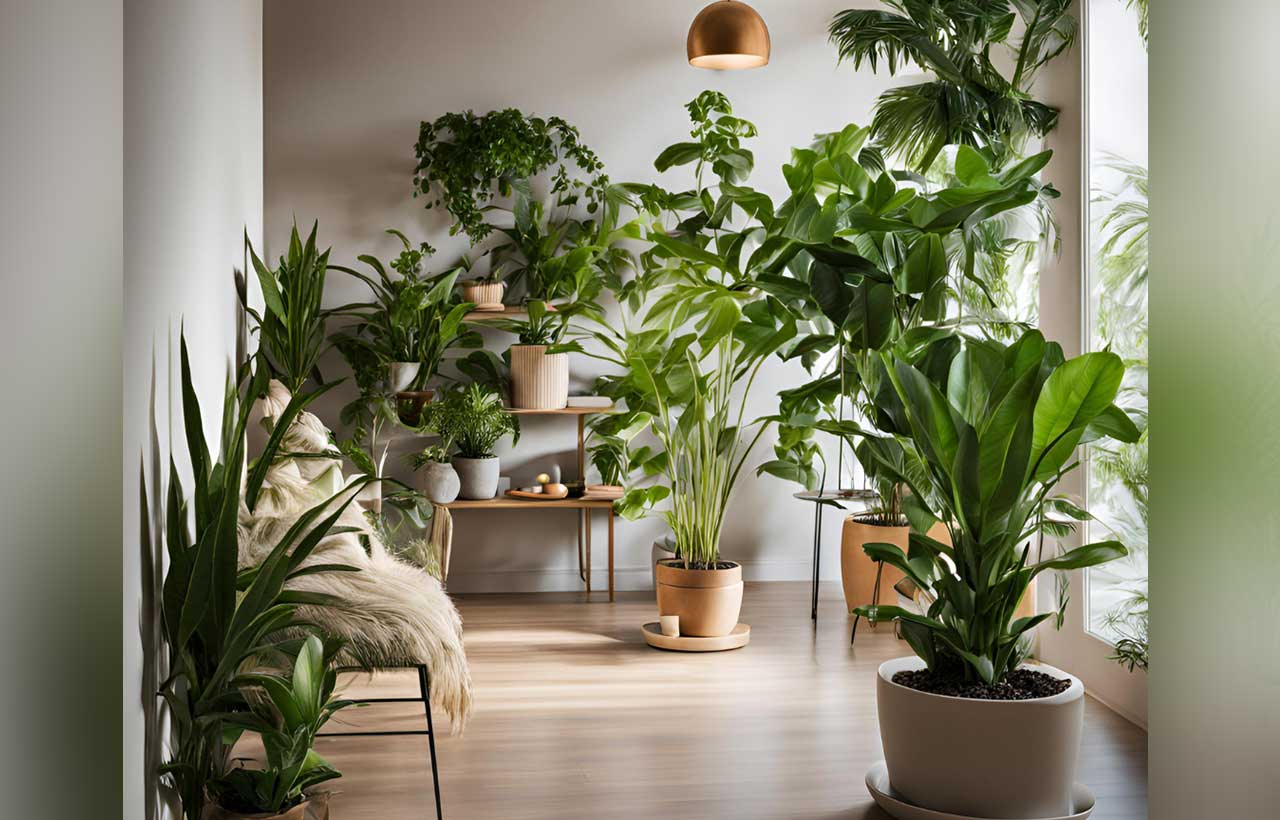 To promote well-being and improve air quality, bringing outside space is essential. To choose the right indoor plants, one needs to understand the general factors such as light requirements, space constraints and maintenance.
To promote well-being and improve air quality, bringing outside space is essential. To choose the right indoor plants, one needs to understand the general factors such as light requirements, space constraints and maintenance.
Factors to Consider: Light, Space, and Maintenance: Find out the corners in your home where natural light is maximum received, and consider the type of light bright, indirect and low sunlight. Consider the available space for hanging plants and for larger plants an open or spacious space is perfect. Align your schedule and maintain a proper chart for watering the plants. Use various smart devices that can track your schedule and remind you to take care of your plants.
Best Plants for Low-Light Conditions: Sansevieria requires low light and it is usually placed in bedrooms or passages. ZZ plants thrive in dim light with minimal care while Pothos can adapt to most environments.
Easy-to-Maintain Plants for Busy Lifestyles: For busy households and lifestyles, choose the spider plant as it is strong and requires less care. Jade plants on the sunny window sills add vibrancy to the space. With a passion for flowering plants, opt for peace lily, a drought tolerant.
Placement and Care Tips
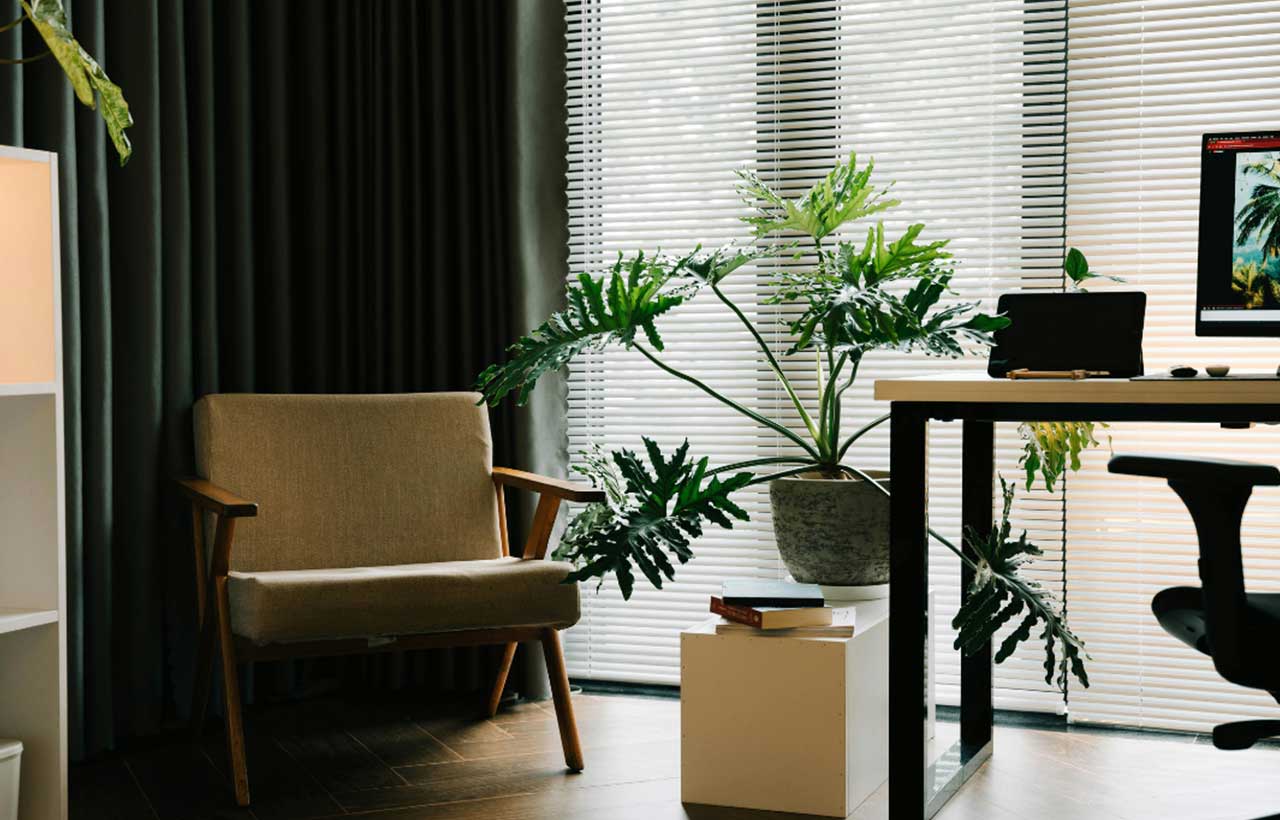 Breathable indoor green corners enhance the air quality and maintain the temperature creating a biophilic environment. Let's delve into how to take care of indoor plants and a few convenient tips.
Breathable indoor green corners enhance the air quality and maintain the temperature creating a biophilic environment. Let's delve into how to take care of indoor plants and a few convenient tips.
Maximizing Space: Vertical Gardening and Hanging Planters: To save floor space, use wall-mounted planters or hangers on accent decorative walls creating a stylish hanging in the compact home which is not just aesthetic but can maximize the overhead space. Create a cluster or group of plants in a quiet corner to bring greenery without cluttering the space.
Watering and Feeding Your Indoor Plants: Each indoor plant has its properties. Understand them thoroughly and place them according to the light requirement. Check the soil before watering, as over-watering the plant is a major issue and a common mistake. Preventing overgrowth and regular pruning are essential to keep indoor plants healthy.
Preventing Pests and Diseases: It is important to check the health of the plant, through soil and watering conditions. Check weekly for signs of pests like yellow leaves, fallen dead branches, or webbing. Inspect the bottom of leaves and stems because this is where pests hide. Remove debris or fallen leaves to prevent fungus. Make sure plants receive enough sunlight and proper air circulation.
Creative Decorating Ideas with Indoor Plants
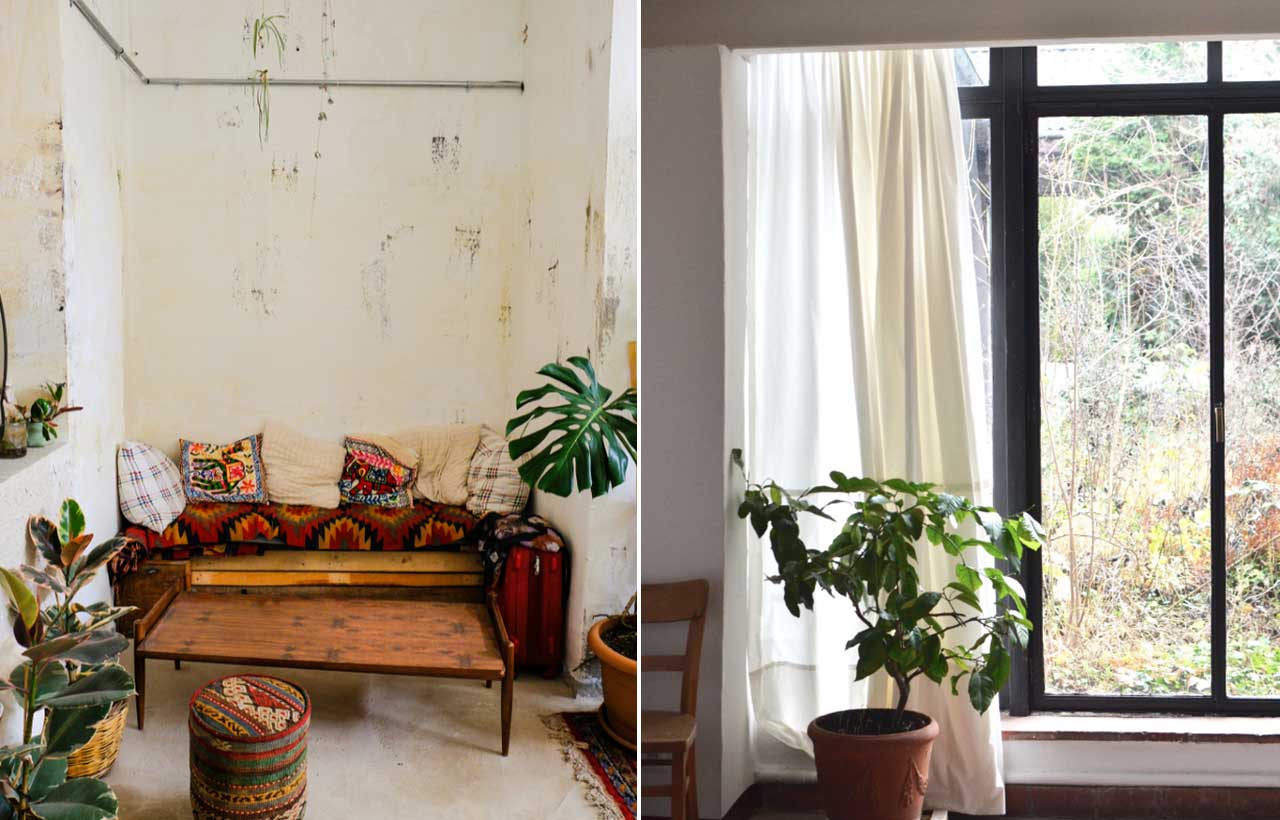 Creatively placing indoor plants creates an aesthetic appeal and it serves as a beautiful decorative element in the space.
Creatively placing indoor plants creates an aesthetic appeal and it serves as a beautiful decorative element in the space.
Using Plants to Divide Spaces: With a mixed variety of plants create plant shelves at varying heights to divide the room adding texture and depth to the space. Tall plants like rubber plants can naturally divide the open space such as living or dining. Hanging plants are an ideal option for maximizing the space, suspended from ceilings break up the large room.
Creating a Mini Indoor Garden: Designers should create a small ecosystem with the use of glass containers adding layers of rocks, charcoal and soil for indoor plants. A herb garden with a few pots of basil, and mint near the kitchen results in a practical approach. Plants with diverse textures, colours and shapes create a cozy botanical garden-like interior.
Utilizing Windowsills and Shelves: Utilize the natural light to grow plants and group them near the window sill. The use of vertical shelving creates greenery along the walls.
Real Estate Tips for Plant Lovers
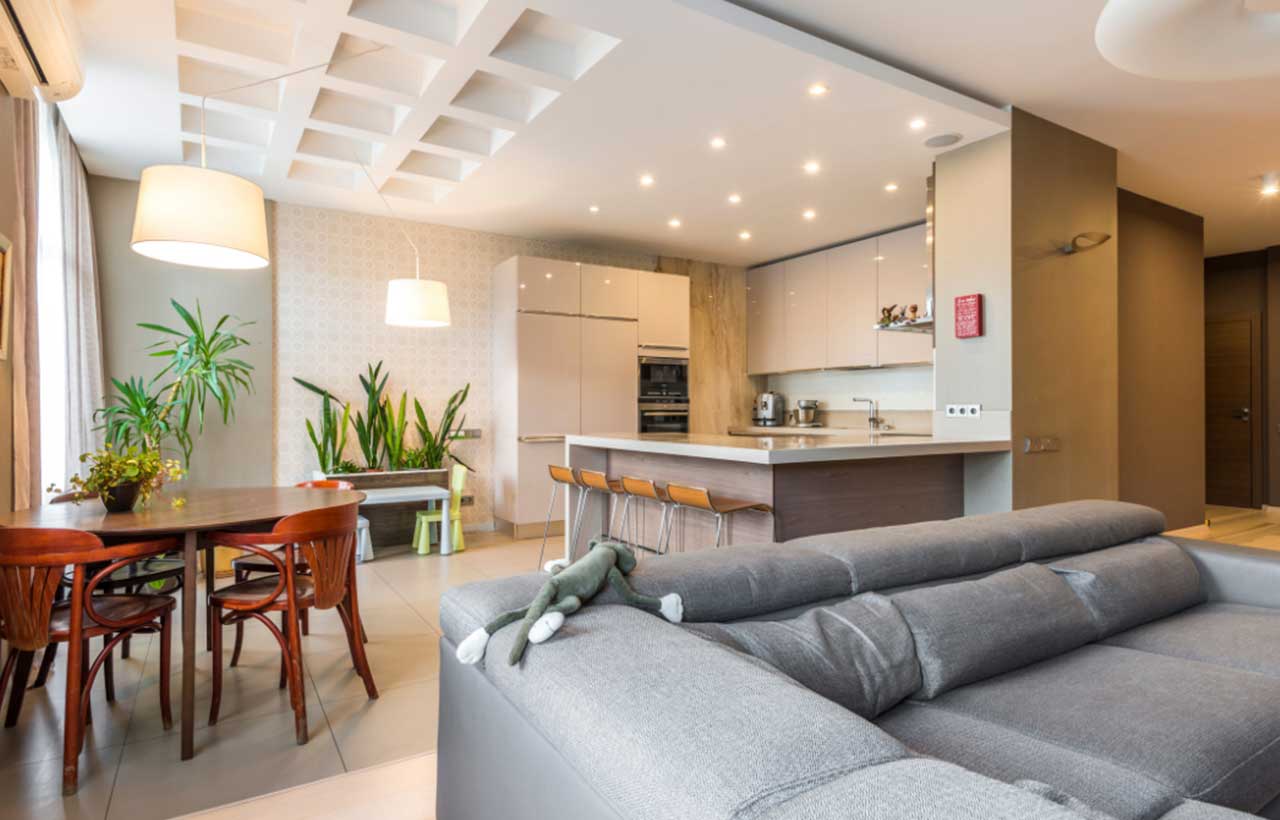 Indoor plants can enhance the space, and the home and especially for potential buyers add an eco-friendly feature. Here are some real estate tips for plant lovers for highlighting the green vibrancy.
Indoor plants can enhance the space, and the home and especially for potential buyers add an eco-friendly feature. Here are some real estate tips for plant lovers for highlighting the green vibrancy.
Staging Your Home with Indoor Plants for Sale: Create an inviting space with large plants in the corners or passages and small ones on window sill or tables. Consciously placing plants and avoiding outside noise is a wise choice with focusing on the focal points. Keep it simple and elegant and do not overcrowd the space.
Highlighting Green Spaces in Property Listings: Focus on the outdoor area while listing the property that has a balcony, garden or green spaces. Use photos that have indoor plants with unique features capturing the buyer's attention in sustainable living.
Attracting Buyers with Eco-Friendly Features: Supporting eco-friendly techniques and systems, your home can implement various smart building features such as energy-efficient digital approaches, and solar panels. Mention easy-to-care plants appealing to buyers who love indoor plants and have an amazing experience. If your compact home uses sustainable materials such as bamboo, wood or recycled materials, mention them to attract buyers for innovative home gardens.
Conclusion
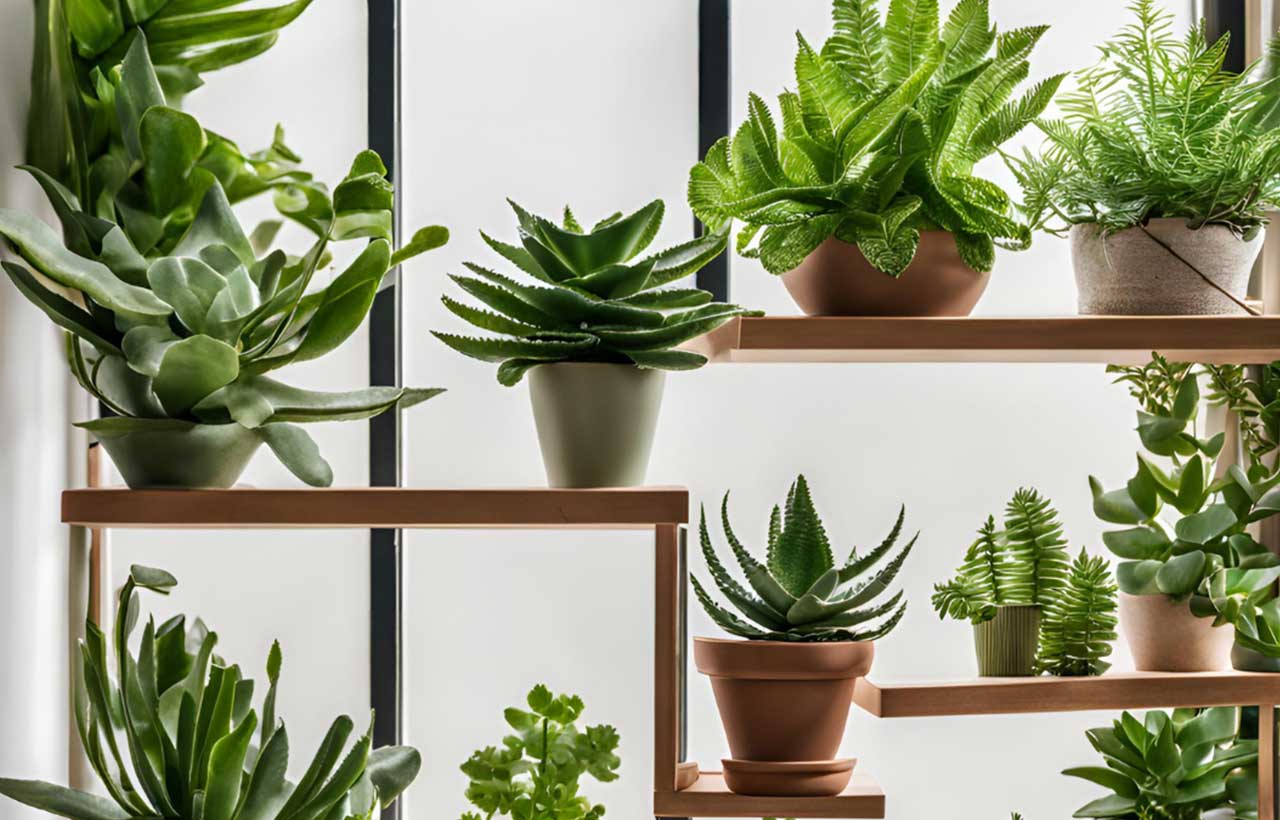 The conscious placement of Indoor plants acts as the space’s extension creating the designer's dream true and narrative experiential. Whether you are planning an engaging workspace or a compact home, adding texture to the interior with plants blends the architecture and nature embodying the principle of biophilic design. By choosing eco-friendly techniques, and adaptable indoor plants and placing them creatively transform the smallest homes into experiential living places. So, what wait? Bring the outdoors in and redefine your compact house with this guide to creativity with the right plants.
The conscious placement of Indoor plants acts as the space’s extension creating the designer's dream true and narrative experiential. Whether you are planning an engaging workspace or a compact home, adding texture to the interior with plants blends the architecture and nature embodying the principle of biophilic design. By choosing eco-friendly techniques, and adaptable indoor plants and placing them creatively transform the smallest homes into experiential living places. So, what wait? Bring the outdoors in and redefine your compact house with this guide to creativity with the right plants.
Frequently Asked Questions (FAQs)
What are the best low-maintenance indoor plants for small spaces?
Known for its low maintenance, requirement of indirect sunlight and easy-to-maintain Snake Plant (Sansevieria), ZZ Plant (Zamioculcas zamiifolia), Pothos (Epipremnum aureum), Succulents (e.g., Jade Plant, Aloe Vera) are best the best low-maintenance indoor plants for small spaces.
How can indoor plants improve the air quality in my home?
Indoor plants added to the decisions as an essential part of the design transforming the space into a zen feeling, peaceful and lush. Plants can trap dust and airborne particles, making the air cleaner and reducing allergens. It improves mental well-being.
What are some creative ways to display indoor plants in a compact home?
Hanging in the corner, diving a large space, suspended from the ceiling, placed in a quiet corner, vertical garden, window sills etc are some creative ways to display indoor plants in a compact home.


